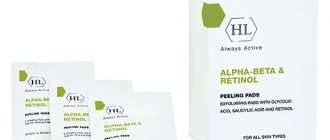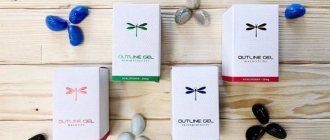Installing permanent jewelry in the cheek is a non-standard type of biomodification, but in the youth subculture it is a fairly popular way to attract attention and express one’s individuality. Cheek piercing is done between the cheekbone and lower jaw, and there are several generally accepted piercing points:
- in the area of the buccal muscle (in place of the so-called dimples);
- closer to the corner of the mouth (in the area of the muscle that depresses the corner of the mouth);
- in the area of the orbicularis oris muscle.
Many people find moles on the face attractive and use round metal jewelry to imitate them. As a result of wearing them for a long time, a small scar is formed in this part of the face, which resembles dimples.
Photo
You may be thinking about getting a cheek piercing but aren't sure what it would look like. If everything is done correctly, it will be fashionable and stylish. Look what Amanda Bynes looks like with a cheek piercing. Here are some photos of her. Do you like this type of piercing?
Amanda Bynes
Cheek piercing and microdermal cheekbone (when only one non-through hole is made in the skin and the jewelry is placed intradermally)
More visible decorations
Superficial cheekbone piercing (when the barbell comes out on both sides)
History of cheek piercing
Many types of skin punctures on the body and face appeared centuries ago.
Cheek piercing is not one of them, it is a modern body modification. It is known that many cultures practiced ritual punctures of the facial skin. Similar manipulations were carried out during religious rites and various holidays. The very fact of the puncture was important; jewelry was never inserted into the resulting holes. A striking example of such ritual piercing can be seen in Phuket (Thailand). Here, to this day, a vegetarian festival is held, during which mediums fall into a trance and pierce the skin of their cheeks with sharp devices. Civilized piercing has an indirect relation to this sacrament. The main purpose of skin piercing today is to decorate one’s own body.
Process and sensations
The cheek is quite thick and has a lot of blood vessels, so bleeding and slight pain may occur during the process. During the piercing, the technician needs to find your parotid canals and mark with dots the places you want to pierce (you need to avoid touching these canals). The master will ask you to rinse your mouth and prepare the skin for the external piercing.
He or she will then use a 14g or 16g needle and puncture from the inside to make the process easier. If you choose to pierce externally, you should have a plug in your mouth to prevent accidental damage to your gums, tongue, or other parts of your mouth. Finally, the jewelry is screwed on. To reduce pain, local anesthesia is applied 15 minutes before the procedure.
Description of the procedure
Skin punctures on the face should only be performed by specialists. Doing this type of piercing at home is very dangerous. There are a lot of nerve endings on the face. A careless puncture or an incorrectly chosen place for it can cause complete or partial paralysis of the muscles (distortion of the face).
Find a good piercing salon in your city and, only after making sure of the competence of the master, sign up for the procedure. Cheek piercing can be performed with local anesthesia at the client's request. The puncture is performed with a special tool into which the selected jewelry is immediately inserted. The procedure is quite simple and does not require any special preparation. Finally, the client receives care recommendations.
Microdermal
Microdermal Cheekbone Piercing
Instead of a conventional piercing, you can opt for microdermal cheekbone implants, which consist of two components: “an anchor that is implanted under the skin, with a footplate protruding from under the skin, with the option of replacing a decorative part that is screwed onto the footplate of the anchor”[Wikipedia .org].
Besides the cheeks, microdermals can also be placed anywhere on the surface of your skin. They do not leave much scarring after removal and are semi-permanent. However, caution should be exercised during the healing process as the body may begin to reject them over time, and complaints of headaches have also been noted.
Other benefits of intradermal microimplantation in the cheeks include a reduction in the “tendency to oversecrete lymphatic fluid, which has a saliva-like texture and may have a foul odor” [Wikipedia.org], and is typically seen with a full cheek piercing. Microdermal piercing also has lower rates of infection and no damage to teeth or gums.
Dimples piercing
Dimple and Cheekbone Piercings
A dimple piercing is a piercing that is placed in a naturally existing indentation, or “in approximately the same area, to simulate the appearance of a dimple” [tattoo.about.com]. This creates the effect of real dimples on the cheeks.
You can go for a full piercing, where the piercing is done all the way through, or you can choose an intradermal piercing (microdermal). The scarring process will happen in any case, and the cost will not differ much from the one we cited above. However, contact a specialist, since not every specialist can make a high-quality cheek piercing.
Cheekbone piercing or anti-eyebrow
Microdermal on the cheek bone.
Piercing in this place is also sometimes called “anti-eyebrow,” but this is not entirely accurate. Have you noticed people with cheekbone piercings? Have you ever thought about how it is made? Is it a superficial piercing or a microdermal piercing?
When piercing the cheekbones, you cannot pierce all the way through, so you need to do either a superficial piercing or a microdermal piercing.
Many people often confuse it with a type of piercing called an anti-brow, which is located above the cheekbone or under the eyebrow" [Wikipedia.org]. However, some sources refer to anti-brow piercing as a cheekbone or upper cheek piercing.
If you choose a superficial type of piercing, suitable jewelry in this case would be a labret, barbell, hoop earring and curved barbell. And microdermal piercing, as already mentioned, should only be done with a good specialist.
How much does cheekbone piercing cost?
The cost of cheekbone piercing will depend on the type of piercing. The cost of a superficial piercing will range around the average price, while microdermal implants cost between $70 and $100. Jewelry will cost up to $20.
Through skin puncture with labret installation
The traditional version of cheek piercing is a through puncture of the skin followed by installation of a special decoration (labret) in the resulting channel. Typically, this body modification depicts natural “dimples.” The punctures are made symmetrically in the middle or lower part of the cheeks. For this type of piercing, only labrets are suitable - jewelry that has a flat circle at one end for fixation and a decorative element at the other. This piercing does not injure the teeth and tongue. When piercing the cheeks, it is not recommended to remove jewelry for a long time, as in this case the channel may heal in a matter of days.
Swelling and pain
The pain from a cheek piercing is not very severe, it can be compared to the pain from a lip piercing. On a scale of 1 to 10, where 1 is painless and 10 is very painful, it will range from 3 to 5. Swelling may occur after the puncture, which often makes eating difficult because it is painful. The swelling will go down in a few days and in a week or two you will be able to smile fully. For some people, the swelling may last longer.
To minimize swelling, you can try sucking on an ice cube, applying cold compresses, taking anti-inflammatory medications, drinking cold liquids, and you can also try traditional anti-inflammatory remedies such as chamomile tea and recipes containing arnica gona.
Care and healing time
Healing usually takes 8 to 12 weeks. However, the process can take more than 6 months, and sometimes more than a year. You can replace your jewelry after 6-8 weeks. As a general rule, the less often you change your jewelry, the better the holes heal.
To minimize the chance of infection and speed up healing, clean the piercing site, both the inside and outside of the cheek, using a saline solution twice a day. To clean the outside, you can also use a variety of products such as Piercing Healing Spray or H2Ocean Rinse. Use a cotton swab to thoroughly clean the piercing for about 5 minutes. To clean your mouth, rinse your mouth with a sea salt solution for about 5 minutes and maintain good oral hygiene, including using an antibacterial alcohol-based mouthwash.
During the healing process of the cheek, it is necessary to carefully care for the puncture site to prevent infection, the formation of keloid scars and other complications. Great care is required in the initial stages of treatment. The following postoperative care procedure is recommended:
- Men should shave carefully to avoid injury.
- Avoid smoking and drinking alcohol.
- Avoid touching the jewelry with your teeth or chewing gum.
- When applying makeup and hairspray, women should cover the piercing site to prevent it from being affected.
- For bruises or infections, try tea tree oil.
- Participation in physical activities that may cause injury should be minimized.
- Avoid eating spicy foods.
- Avoid touching jewelry.
Normally, clear white discharge may be present. If the secretion becomes yellow or green, this may indicate an infection. In this case, you need to consult a doctor.
Jewelry and clips
In most cases, a regular barbell is used as decoration to avoid pathological growth of cheek tissue. As an alternative, you can also use a lip earring size 16 to 12 with a flat back. The flat back reduces the chance of gum and tooth damage. However, during the healing process, the flat back of the stud may become embedded in the skin and will need to be surgically removed. Therefore, it is better to choose jewelry with a ball instead of a flat back, specially made of acrylic or soft material.
The length of the jewelry is usually about 1 inch (or 18-24 mm), but on average it varies from 0.5 to 1.5 inches, thereby reducing the possibility of tissue damage from a very short barbell immediately after the procedure. The thickness of the cheek can also influence the choice of the appropriate length. Short jewelry can put pressure on the tissue at the piercing site, causing the tissue to die, a condition known as necrosis. Once the piercing site has completely healed, shorter jewelry, usually 16-18mm in length, can be used to reduce damage to the gums and teeth and prevent accidental biting.
Piercing jewelry can be purchased at any online store, for example, international eBay, amazon.com, aliexpress.com. The most popular jewelry has a bar length of 1/4 to 2 inches, (with 3/4 or 5/8 measurements) and can also be set with gemstones up to 4mm on the outside and a ball up to 3mm on the inside. This can be a curved barbell for lip piercing, or a regular straight barbell; a ball with a precious stone can be part of the jewelry, or it can be a separate part.
You can choose jewelry made from any material such as diamond, gold, steel, etc. However, avoid using low quality materials as they tend to cause allergic reactions. To begin with, it is recommended to purchase a soft BioFlex (PTFE) rod. This minimizes damage to teeth and gums.
If you need to temporarily remove jewelry, such as at work, school, church, or family gatherings, or need to insert non-metallic body jewelry for medical procedures, make sure you have a good replacement item. There are many clear and flesh-colored retainers available on the market, made from silicone, acrylic, bioplastic, etc., that can effectively hide the piercing.
Size chart
To give you an idea of the ideal piercing length, below are the jewelry sizes. Factors such as cheek thickness can influence what length is ideal.
Scars and their removal
Scars are an unpleasant consequence of any piercing, and the cheeks are no exception, since a scar will form at the puncture site. According to Stephen Wallach, MD, a plastic surgeon in Manhattan, "all body piercings result in scars." Over time, the scar may become smaller, but it will not completely disappear on its own [realself.com]. It's worth noting that post-operative care, as well as your skin's reaction, can determine the size of the scar.
The next question that may interest you is the treatment of scars. Stephen Wallach o. In most cases, the scar will heal on its own over time.
However, if the scar is very noticeable and pronounced, you may want to undergo corrective surgery. However, there is no guarantee that the scar will be completely eliminated. As Richard H. Tholen, a plastic surgeon in Minneapolis, points out, "There is no surgeon or surgical technique that can completely remove scars."
Photo of cheek piercing scars
These photos will give you an idea of what cheek scars look like after piercing. They are more visible after the decoration is removed. However, after correction they become almost invisible.
Before and after scar removal
Cosmetic effects
The only way to get the coveted cavities at the corners of your mouth is to be born with them. If you are unlucky with this, and you are not yet ready for surgical intervention, you can resort to cosmetic techniques.
Decorative cosmetics will help you with this:
- pencils;
- shadows;
- proofreaders;
- powder;
- liquid eyeliner;
If you have subtle dimples, you can highlight their depth and shape using powder or eye shadow a few shades darker than your natural skin color: simply apply it where the dimples form.
You can also make a small dot in the center of the indentation with a soft brown pencil and shade it with a cotton swab.
A liquid highlighter will help highlight your natural curves: use it to highlight the areas around your dimple. This contrast will create the effect of a clear transition from smooth skin to depression.
If you don't have dimples, you can draw them yourself:
- To begin , smile widely to determine the place where artificial dimples will look as realistic as possible. They should be symmetrical and located 1-2 cm from the corners of the lips.
- Mark them with a dark pencil and relax your facial muscles. Around this point, draw small curves on both sides, shaped like arcs. The pencil should be a natural brown color that matches your skin as closely as possible. Avoid black eyeliner and other intense products.
- Blend the lines with your fingertips or a cotton swab to give the dimple a natural look. There should be a smooth transition from light brown to dark brown.
- Smile widely again to make sure the dimples are in place and symmetrical. Correct their shape and apply a light-colored foundation along the contour.
Please note that this method is only suitable for photo shoots and videos in which you will constantly smile. In ordinary life and in a relaxed state of muscles, you will look at least ridiculous.











